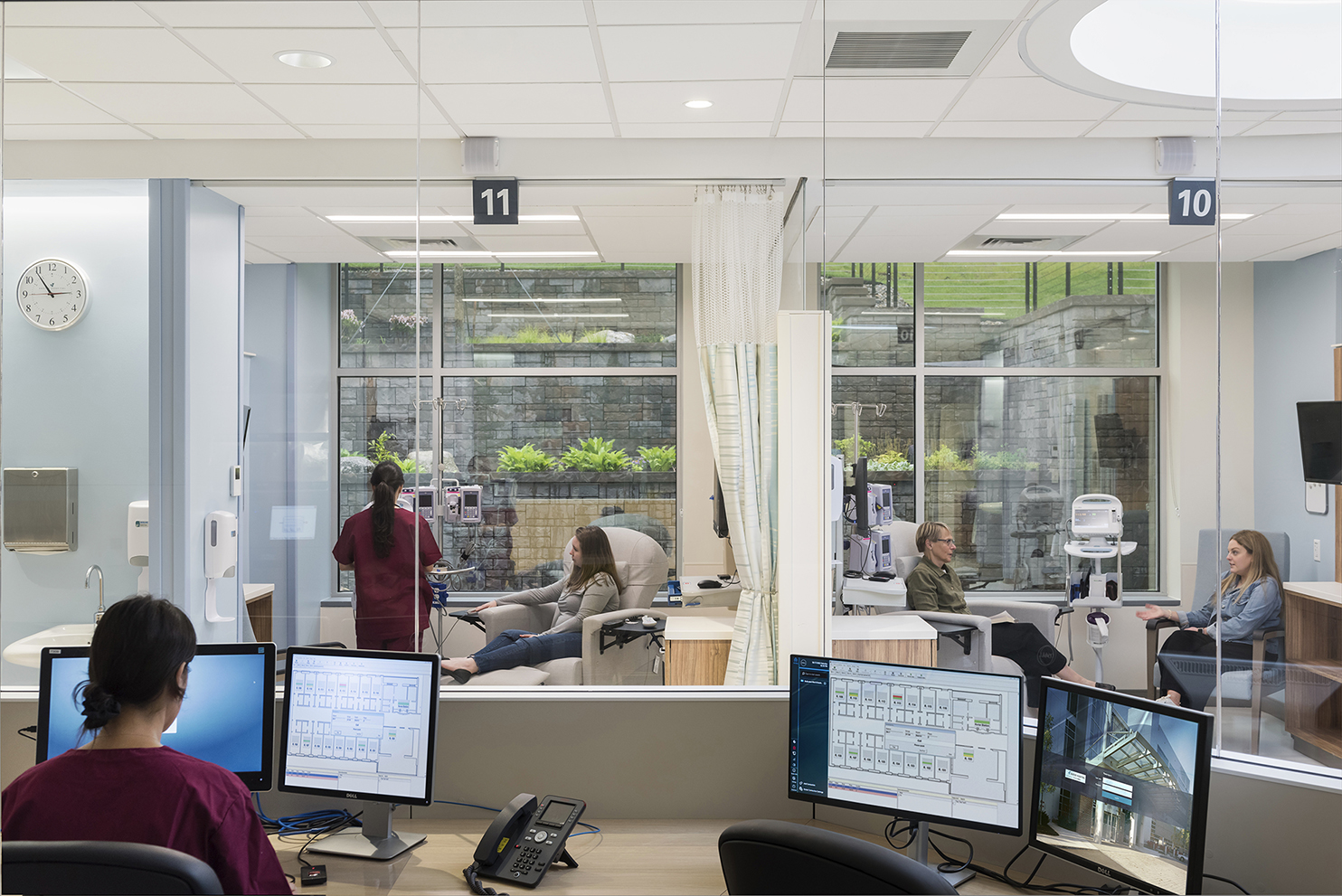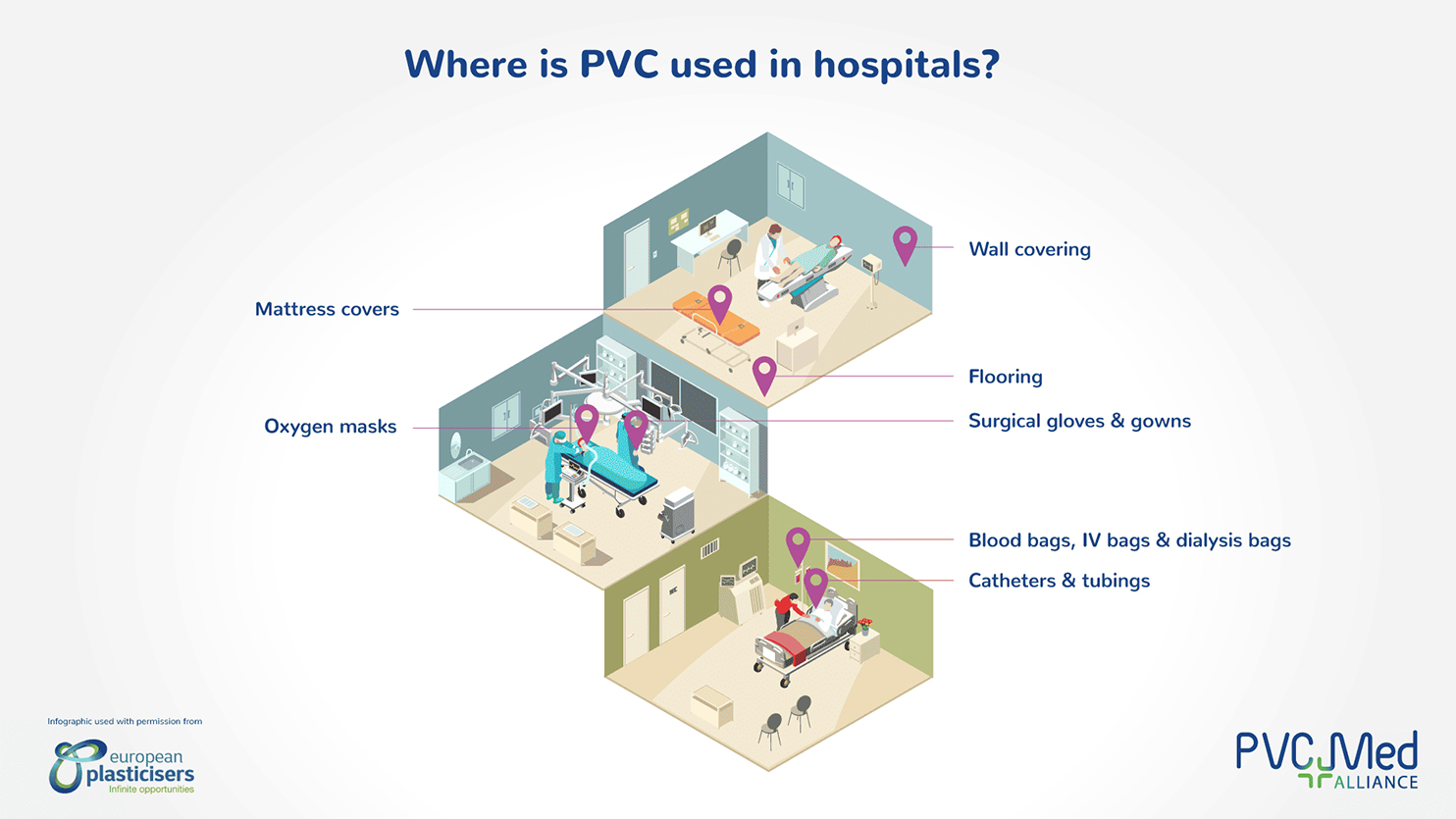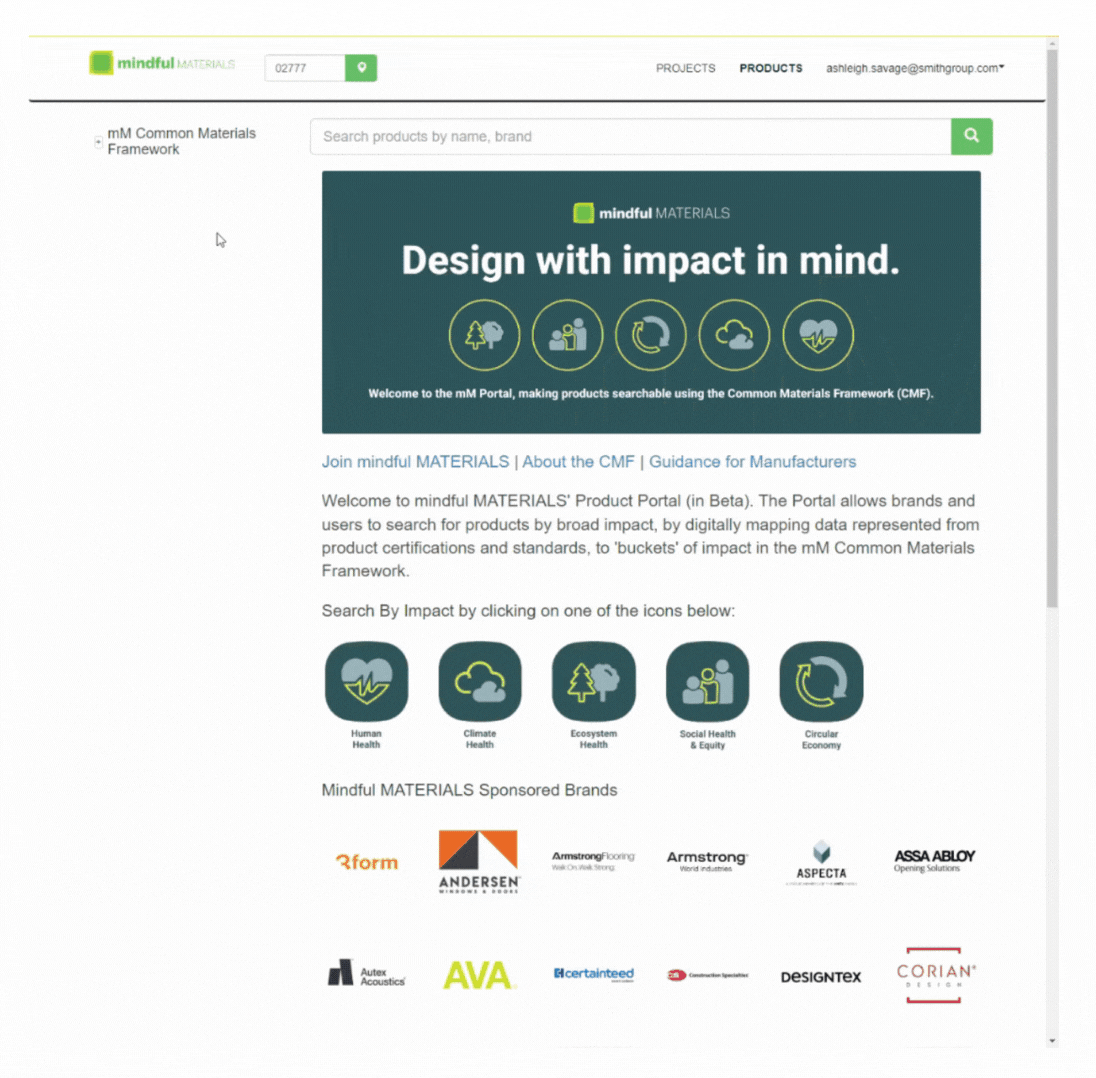Designing the Future of Material Health
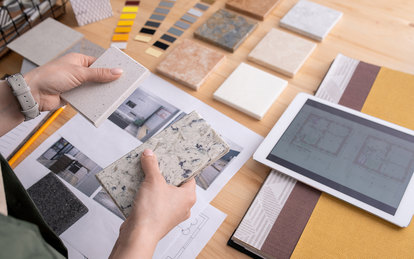
I’ve always known what I wanted to be “when I grow up.” However, when it comes down to why I became a healthcare interior designer, I am brought back to my dad’s diagnosis of liver cancer.
I spent my last winter semester as a senior in college going from thesis studio to the local hospital inpatient unit, visiting my dad as he recovered from his liver transplant. I quickly became intrigued by the health impacts of our healthcare environments and their direct connection to healing. I was fascinated by the extent of infection control measures being taken, while simultaneously learning about the hazards posed by Polyvinyl Chloride (PVC) flooring in my materials studio at school.
PVC is considered one of the most toxic substances on the planet and is a major source of toxic chemicals. Not only is it the main ingredient in most hospital-grade flooring, ceilings and wallcoverings, but it is also present in medical devices and even medical supplies like IV bags and tubing.
As a student, the irony of durable performance versus the long-term release of toxic chemicals, especially in an oncology ward, was not lost on me.
As a young designer I was thrown into the deep end of material health, tasked with figuring out a system to help designers and architects in my firm make better, more informed material selections. I was immediately overwhelmed with what felt like a never-ending list of product certifications and declarations. It felt impossible to be able to fully understand these certifications, never mind comparing them to understand the differences.
Historically, many design firms and manufacturers adopted standards found within LEED. When the certification system was first introduced in 2000, the volatile organic compound (VOC) content of building materials was unchartered territory. Now it’s tough to find products that haven’t eliminated VOCs or design firms without specifications that state little to no VOCs to be used.
LEED v4 (released in 2012) was the first to broadly set requirements around HPDs (Health Product Declarations) and EPDs (Environmental Product Declarations). At that time very few manufacturers had product declarations or even a consistent template on what should be included. The design industry quickly became focused on the number of certifications each product had, and how we were going to translate that for designers. Firms started creating their own labeling systems, showcasing which certification was most important to them.
Diagnosing the Problem
Here lies the disconnect between designers and the adoption of certification systems. Most designers don’t have time to learn what product certifications are telling us. For example, an EPD communicates standard information about the life-cycle impacts of a material. But the average designer or architect does not understand that having an EPD does not mean that product is environmentally superior to others.
To move the needle towards more regenerative materials, we must first understand what product certifications are telling us about their impacts. Simply having a declaration is no longer enough. As designers with specifying and buying power, we need to be able to understand if the certification shows optimization and improvement over an industry baseline. But how do we know if our assessment is accurate and whether we are measuring the information and impacts correctly?
Individual design firms and practitioners have unique ways of translating trends and conceptualizing design. But if we are all translating material health differently or coming up with proprietary systems for it, we are just muddying the already extremely murky waters. There can still be a healthy competition for design leadership within our industry while also helping each other do better.
Knowing that our material choices impact building users and beyond, how can we demystify this confusing but vitally important subject and align our work as designers, architects and specifiers?
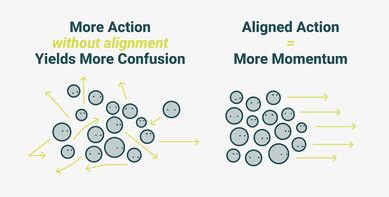
This diagram from mindful Materials' website illustrates the importance of aligned action in driving industrywide progress for material health evaluation and specification.
A Shared Solution
The answer for me came when Mindful Materials released a strategic plan outlining their Common Materials Framework (CMF). The CMF gives structure to the hundreds of certifications in our industry, connecting them to and filtering them by five sustainable impacts outlined in the AIA’s Materials Pledge: Ecosystem Health, Social Health and Equity, Circular Economy, Climate Health, and Human Health.
The CMF was conceived as a centralized data ecosystem, where all designers, specifiers, and architects can access and share the same material health data. As mM’s Alex Muller describes it:
“Inputting and pulling sustainability data should happen from a centralized source; otherwise, we’re redoing everyone else’s work. When you move from label to certification, database to library — the data doesn’t change, just the source, the definition, the organization.”
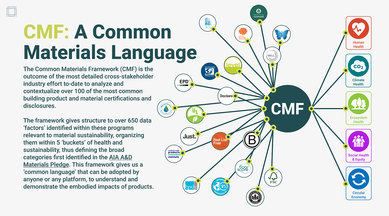
The Common Materials Framework integrates hundreds of certifications, disclosures and related sustainability factors to create a common language for healthy materials specification.
Not only does the CMF give us a level playing field and connected data, it allows those of us who aren’t healthy material specialists to set attainable sustainability and wellness goals for our projects. We’ve all had conversations with clients regarding sustainability and have all heard variations on the same response: “Sustainability isn’t in the budget.” With the CMF, we’re able to evaluate a range of material health goals by impact, and advocate for a more holistic outcome that supports the client’s operational mission and values.
Interior designers evaluate products and finishes from multiple standpoints: cost, aesthetics, longevity, etc. By using the CMF, we now have an industry-aligned approach for analyzing the sustainability data and connecting it with our individual project goals. It’s foolproof.
Thinking back to my early days as a young designer to where we are today, there has been a major shift in our industry regarding material health. We demanded manufacturers make meaningful changes and they have responded. Now the ball is back in our court.
Manufacturers are now investing in sustainable processes and creating healthier products that are better than they were before. We are now able to source products that have zero phthalate plasticizers, zero heavy metal ingredients, even zero added formaldehyde or other harmful ingredients. And these products are increasingly coming from manufacturing plants that aim for zero negative impacts on the environment and are actively reducing their embodied and operational carbon footprint.
Our collective buying power gives us the responsibility to align our efforts across the design industry, rather than separate ourselves for what we think is competitive advantage. This shared direction is the healthiest and most impactful way forward.
